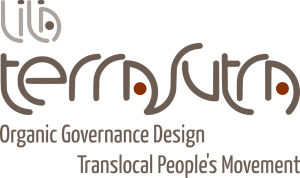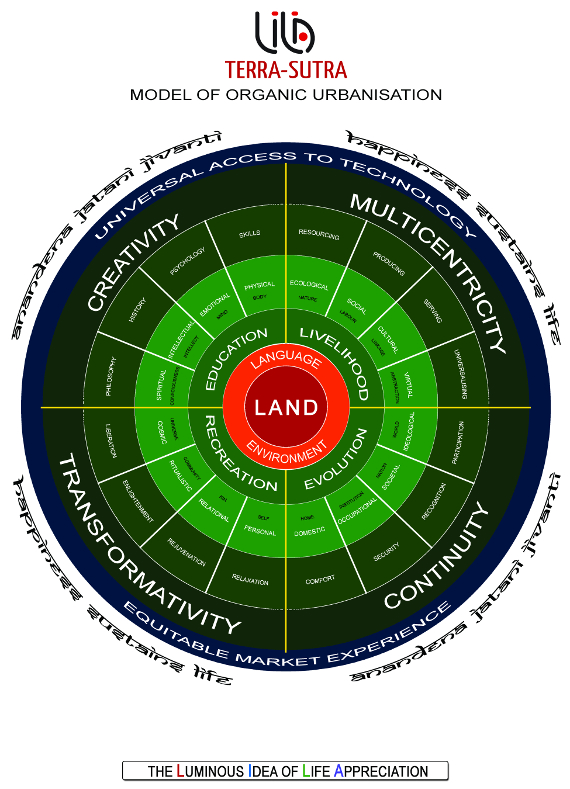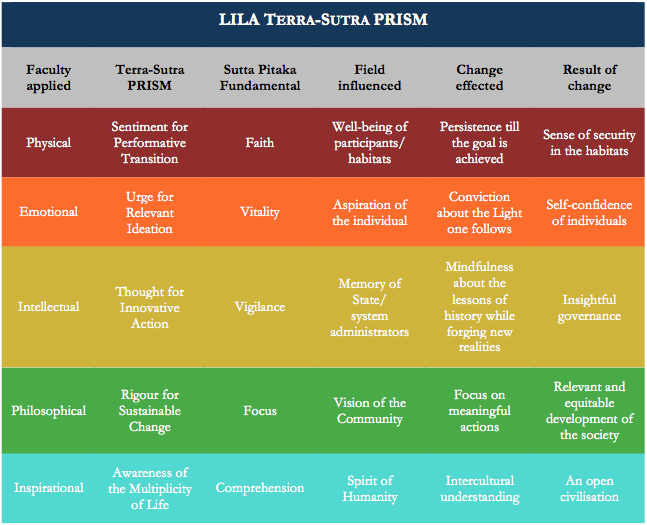
The Background
History seems to have shifted its focus from moment to momentum, since the comparative rates of change in our contexts, rather than any particular change within or around us, have come to mark our techno-intensive, market-determined culture.
The present epoch facilitates narcissism to a degree that seems to eclipse our sense of continuity of cultures, making many of us quite indifferent to the intellectual coherence, philosophical significance, and spiritual resonances of our material heritages. Our processes of modernisation and urbanisation must necessarily link themselves with the historicity of local cultures, and their dynamic interrelationships, and no contemporary processes of commodification must distance our cultural expressions from their simultaneous functional value, cooperative base and social character. Today, the world over, more and more cultural practitioners — native farmers, crafts people, folk performers, local producers — the real purveyors of the collective ideas of our society, are being ousted from the neo-human matrix. And, our industries are characterised by the separation of the contemplative from the active, and the creative from the functional, causing a great divide between work and pleasure, the practical and the aesthetic. This onslaught of neo-liberalism affects not merely the living traditions of the world. The dream and hope of the young, too, are among the major casualties of the new development agendas aimed at vertical success. Now, the chances of an individual realising an equitable community experience are as few as that of a native material culture sustaining itself and growing in the homogenised global market.
The contemporary has also been marked by a great delusion of individual success. The privacy and leisure generously offered by the urban nuclear spaces and virtual communication devices turn out to be nothing but loneliness in tempting guises, success often fails to deliver happiness. These contradictions arise from the erroneous neo-liberal understanding of urbanisation. Our hi-tech sagas tend to promote the city as a recent invention, and urban culture as a boon of comfort bestowed on humanity by the Enlightenment move to single out and exalt human reason above the natural world. As a result, our cities have been trapped in their own brief histories compiled by the development gurus.
The homogenous aesthetic and development statistics of the new cities have rendered many local cultures and their complex histories obsolete, unwieldy and useless. The bizarre effect of the contemporary obsession with security is reflected in the boredom, unrest and loneliness of millions of ‘users’, ‘consumers’ and ‘clients’ who fail to relate to the smart functions, luxury goods and premium packages their urban context has made available to them. The ironical consequence of this mode of urbanity is the utter incapacity of its devices and services to transform information into wisdom. The absence of a non-linear knowledge enterprise facilitating such a transformation has given rise to an industry of disposable cultures promising instant gratification in all fields of life. This loss of genuine histories, the abandonment of the wisdom of cultural continuance is the great tragedy of the human in our times.
Now, is there a way out of the fallacy of modernity that is threatening to turn us into mere human cubicles? Should we not urgently recover our happiness from the clutches of commodification, reaffirm the functional aesthetic of our material cultures, reclaim the native wisdom of our communities? Can we evolve effective methodologies to make our culturally and economically diverse world equitable?
A tall order, but certainly not impossible or impractical!
Terra-Sutra: The Thread of Life Appreciation
LILA Terra-Sutra invests itself in discovering, nurturing, celebrating, distributing, renewing and conserving resources in various fields of knowledge and creativity, so that the possibility of equitable and ecological living becomes apparent and integral to every human being. It understands Equity as the most effective means, the essential thread of connection, to creatively engage with the apparently uneven/unequal world. Towards this, it privileges the profound legacies of terra, earth, and sutra, thread. At its heart is the Land, which brings forth the significance of Language and Environment in the vision and practise of governance it proposes. We believe no society can arrive at a sustainable model of governance if it did not respect the material cultures of its communities as reflected in their centuries old local languages. And, no land can organically grow without giving serious attention to the environmental implications of the processes of development. Terra evokes the possibility of evolving urban spaces through a serious rethinking of the Language and Environment associated with a land, which are human civilisational interventions within nature’s eco-system.
Terra-Sutra is the thread that links the earth. The Pali Sutta Pitaka provides a set of fundamentals which LILA has adopted and adapted to form the basic Terra-Sutra tenets to create organic urban spaces of life appreciation: Faith/Belief (saddha), Energy/Perseverance (virya), Mindfulness/Memory (sati), Concentration/Focus (samadhi), Wisdom/Understanding (panna).
Through a multi-dynamic exploration of Transformation in the Buddhist text, LILA has extended the scope of its inspiration by connecting it with a number of like sites. Such resonances have encouraged us to re-view the Sutta Pitaka essentials through our own PRISM for Transformation: Sentiment for Performativity, Urge for Relevance, Thought for Innovation, Rigour for Sustainability, Awareness of life’s Multiplicity.

The LILA Terra-Sutra Chakra is a mathematical abstraction that contains within its use of primary colours, terms of reference, and geometrical segments, the immense possibility of opening out the ontological and phenomenological discourses embedded in the scheme of LILA PRISM. Through its very graphic structure, it pays respects to the many seeds of wisdom that humanity has discovered and nurtured over generations. LILA Terra-Sutra draws from the profound traditions of thus transferring many a nuanced experience of living from one space-time to another through a single representational image.
Through an Organic Cultural Design employing a few playsome turns of phrases, figures and colours, Terra-Sutra explores and rediscovers the cardinal terms and phenomenal principles that form the LILA PRISM – from cosmic performativity, through the quest of consciousness to be relevantly embodied in ideas, intellectual apprehension of innovativeness and governance, sustainability of the sentiment of happiness, to the physical realisation of multiplicity. It arrives at the possibility of refracting these principles through a prismatic experience of self-governance: a reverse play of faculties is found thus, moving from the physical performativity of the participants, through their emotional need to be relevant, their intellectual thinking towards innovation, their philosophical vision of justice, and ultimately to their inspirational realisation of the multiplicity of the universe.

LILA Terra-Sutra endeavours to understand and recover Urbanisation in its etymological sense – as a process of Settlement presupposing a concern for a refinement of living. Today, urbanisation has come to be synonymous with mindlessness because, over time, the three characteristic features of urbanisation – culturing (Learning, Training and Resourcing), building (Production and Architecture), and sharing (Communications, Marketing and Distribution) – have come to be separated from the natural means of livelihood, sustenance and growth available to human communities settled in various parts of the planet. Terra-Sutra seeks to address this issue through the creation of a governance methodology for organic urbanisation that effects the gradual recovery of Human Refinement as an evolutionary process organically linked with the Human as a Natural Site. Under the Terra-Sutra umbrella, infrastructure, human and technological resources, knowledge and communication systems in various locales would be gathered into a Translocal Connective for Intercultural Equity facilitating a Horizontal Continuum of Happiness. The Terra-Sutra methodology takes into account the complexities involved in undertaking such a large-scale initiative in our multi-layered, acutely pluralistic world. Hence, it approaches the immense task at hand in a phased out manner, through the creation of Sanctuaries of Life Appreciation, Campus-Links chapters, and Organic Design and Governance consultancies, thus gradually scaling up to create a world-wide people’s connective for equity.
Discover:

